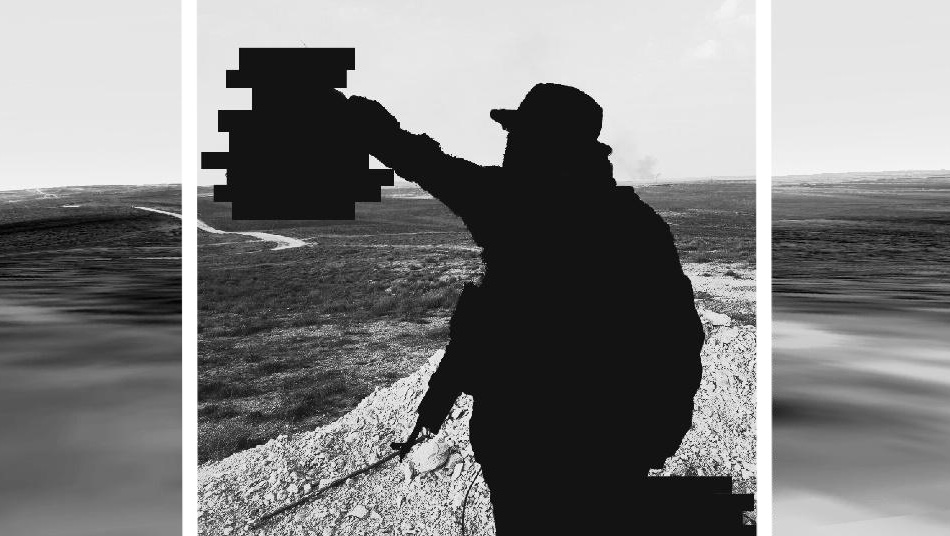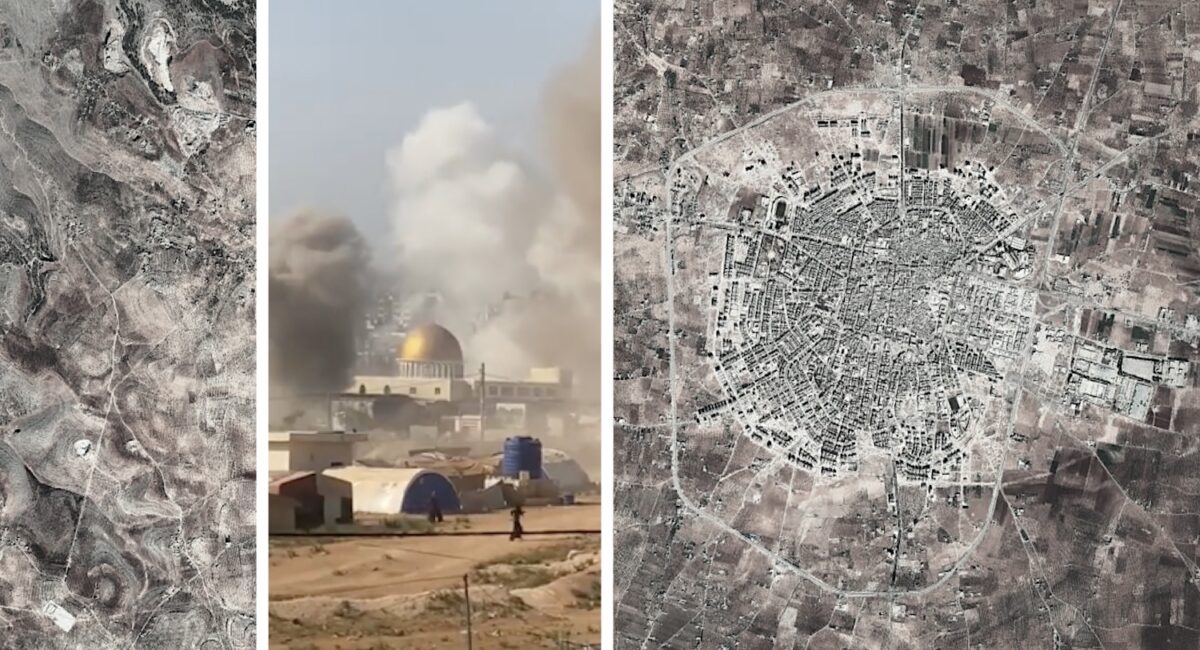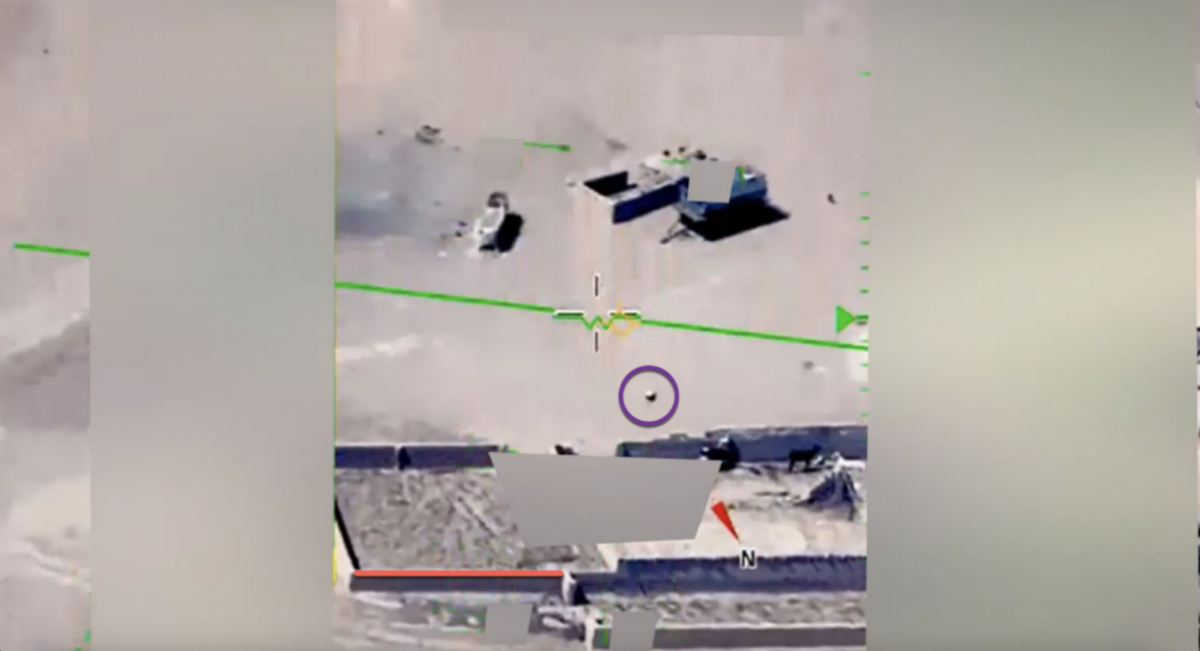US & Allies Begin Air-strikes In Syria
U.S. and Arab allies launched air-strikes across Syrian territory targeting Islamic State and the al-Qaeda-linked Khorasan group.
On 23SEPT14, Pentagon officials briefing the press described the successful air-strikes as part “of a credible and sustainable persistent campaign to degrade and ultimately destroy” the Islamic State. US forces hit targets focusing on the organization’s command and control infrastructure but stressed that they had not targeted the group’s leadership at this time.
US Forces conducted 14 strikes along with those from partner states which included Jordan, the UAE, Bahrain, and Saudi Arabia. Qatar acknowledged playing a supporting role. (US F-18s deployed to Qatar earlier this year and a couple of EP-3s have been observed on imagery).
Three waves of attacks were carried out with the opening salvo accomplished by two US guided missile destroyers, the USS Arleigh Burke (DDG-51) in the Red Sea and the USS Philippine Sea (CG-58) in the Arabian Gulf. Around midnight (local time), the two vessels launched more than 40 Tomahawk cruise missiles at targets in eastern and northern Syria near the cities of Aleppo and Raqaa. The majority of those strikes targeted Khorasan Group compounds, manufacturing workshops and training camps, officials said.
Thirty minutes later, a second wave consisting of F-22 Raptors, F-15 Strike Eagles, F-16s, B-1 bombers and drones launched from regional bases against targets in northern Syria, including ISIS headquarters, training-camp barracks and combat vehicles. After three hours, a final wave consisting of F-18s from the USS George H.W. Bush aircraft carrier (CVN-77) in the northern Arabian Gulf and regionally based U.S. F-16s jets, inter alia, attacked ISIS training camps and combat vehicles in eastern Syria. Coalition partners participated in the second and third waves.
Geolocated Strikes
During Tuesday morning’s press briefing the DoD provided imagery of just three of the fourteen targets. Those targets have been identified. The first one, called out by the DoD as an ISIL Finance Center, is located in the heart of Raqqah city between the Governorate Building (“City Town Office”) and the Circassians Mosque on Faysal Street. The Governorate Building is considered Islamic State’s main HQ in the province since militants took the city in March 2013. In the press statement, the Pentagon claimed it targeted this building’s communications array with a tomahawk cruise missile detonating as air bursts. Earlier in the month, activists spotted what appeared to be a Predator drone orbiting the skies of the city.
The second structure shown in images was called out by the DoD as a command and control center. Islamic rebels initially captured this area back in November 2012. Its location, approximately 50 miles northwest of Raqqa city, is also less than one mile from the 630MW producing Tishrin Dam (literally October Dam). The building was reportedly struck during the second wave of strikes by USAF F-22s flying from the UAE’s Al Dhafra airbase. The F-22s delivered precision guided munitions (or PGMs) targeting only the right (eastern) side of the building. Video released by CENTCOM suggests the US monitored the strike with drone aircraft.
The last target discussed by Pentagon reps was the ISIL residence located near Syria’s Abu Kamal. Described as a training and logistics site, the location was reportedly engaged with multiple PGMs from F/A-18s launched from the USS George H.W. Bush. Based upon additional imagery released by the DoD, this site was probably a vehicle staging area as there appear to be destroyed tanks in the Battle Damage Assessment shown to the press. This is at least one of two sites struck in the area.
The second site, also identified, is located less than two miles from the ISIL residence and was probably the logistics site mentioned during the briefing. (The additional imagery is a screen capture from a video released by US Central Command). Importantly, this location is less than 6 miles from one of the main ground lines of communication leading into Iraq, the Al Qaim border crossing. This was probably a major supply location supporting fighters in Iraq’s Haditha and Ramadi, especially since late June when the crossing was captured.
And last but not least, activists on the ground also reported that the Brigade 93 base was targeted in strikes. This location is approximately 30 miles north and 36 miles east of the ISIL Finance Building and the Command & Control Center, respectively. In August, the Islamic State captured the Syrian Army base from government forces, then one of two final positions held by the Assad regime in the governorate. Interestingly, this location does not appear in the map graphic released to the press.
Concluding Remarks
Although initial airstrikes in Syria were successful, it is difficult to determine how long they will continue. Pentagon spokesman Army Lt. Gen. Bill Mayville told reporters, he would be thinking “in terms of years.” Meanwhile in Iraq, US forces have carried out at least 194 airstrikes against Islamic State as of 23SEPT14. With the additional strikes now in Syria, the USG has considerably expanded its participation in a conflict that it has been apprehensive to fight.








